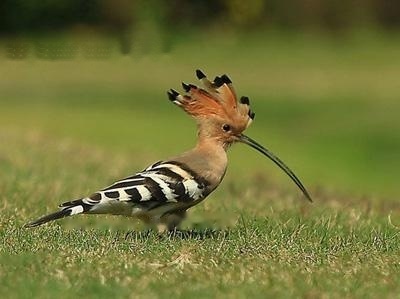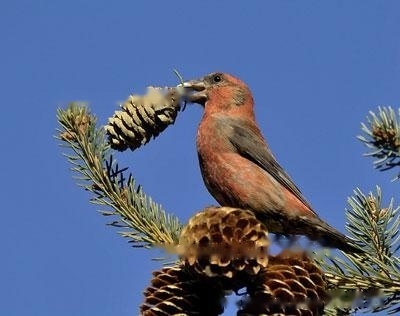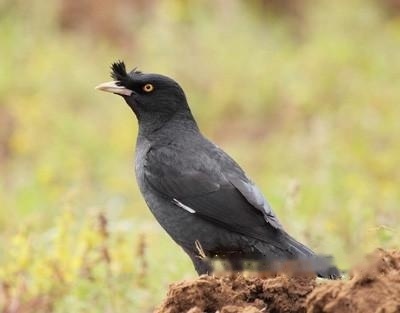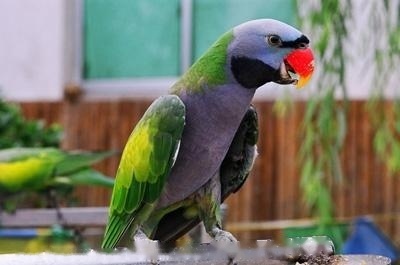The male scarlet-breasted parrot has a black band on the forehead that extends back along the sides to the eyes. There is a black broad-banded spot on each side of the base of the lower mouth, extending backward and obliquely to the side of the neck, the eyes first and around the eyes are stained with green, and the rest of the head is purple-gray. The back of the neck and the sides of the neck are glowing green, the back, shoulders, inner coverts and inner flight feathers are bronze, with metallic green luster, and the feather ends have dark beetle-like spots. The outer middle and large coverts are golden green, and the feather tip also has dark beetle-like spots. The first flight feather is dark brown with a khaki narrow edge, the rest of the flight feathers are dry black brown, the outer and feather tips are green and have a golden yellow narrow edge, the inner dark brown and the edge is khaki. The tail feathers are narrow and pointed. The two central tail feathers are particularly narrow and blue, the base feathers are green, and the tail feathers on both sides are shorter as they go to the outside. Chin stained white, throat and chest red with purple-grey. The rest of the lower body and underwing coverts are green, and the belly feathers are stained with purple-blue.
The head of the female is blue-gray, the throat and breast are orange-red, lacking purplish-gray contamination, and the central tail feathers are generally shorter than those of the males. The young bird's head is grape-brown, with a purple-grey forehead, and gradually turns green below the top of the head. The underparts turn green, the throat and breast are slightly tinged with purple, and the central tail feathers are short.
The iris is yellow (♂) or yellow-white (♀). The upper beak of the male bird is mostly coral red, and the apex is ivory. Female beak dark brown, feet dark yellow green or slate yellow.
Size measurement: body weight ♂110~168g, ♀85~160g; body length ♂263~362mm, ♀220~338mm; mouth peak ♂23~27mm, ♀21~26mm; wings ♂142~167mm , ♀141~163mm; tail ♂98~220mm, ♀92~192mm; tarsal ♂13~21mm, ♀13~21mm. (Note: ♂male;♀female)




